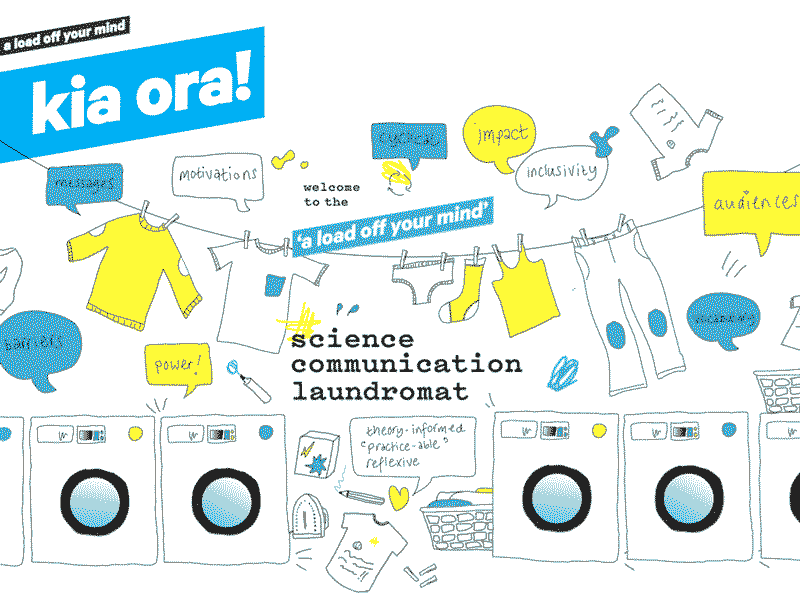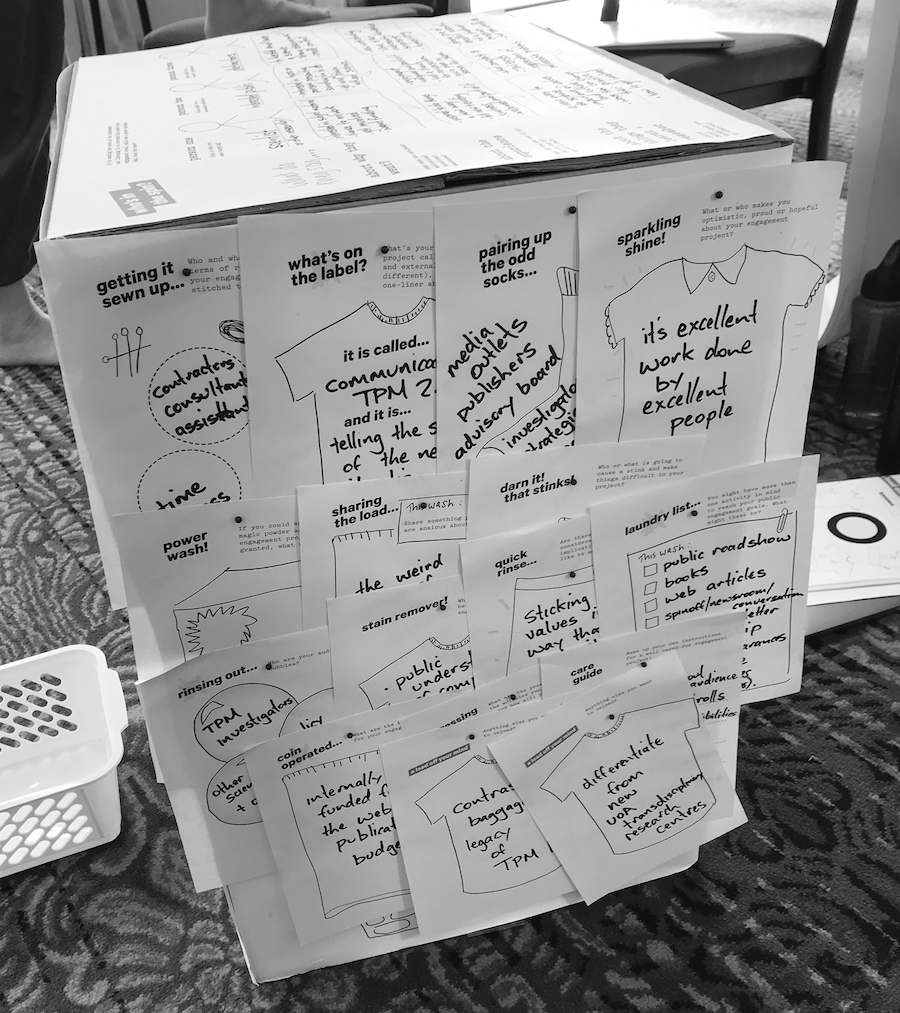Stage 2: sort the laundry
This stage has two parts: Scicomm 101 and Get it on the garments peg ‘em up prompts.
The purpose is to share some background about how science communication is framed in some of the literature. In a group context, this helps build shared understanding and leads to conversations about how others are interpreting the terms science communication and engagement (and other related words). Then, the garment prompts act as a catalyst for gathering a sense of where the engagement project is — getting thoughts out of the mind and pinned or pegged up to sort through.
Jump to:
What is ‘Scicomm 101’?
‘Scicomm 101’ is a presentation and discussion about some basic threads of science communication theory. It invites participants to listen, but also to take part in a conversation about their own understandings and perspectives, and to reflect on what they think the point of scicomm or engagement is.
Frequently, we have thought ‘this is too basic’ for the people that we have in the room (who on many occasions have included highly experienced practitioners). But, it has always proved useful to level the group, to help everyone understand where everyone else is coming from, and to catalyse an interesting conversation often drawing on what’s topical at the time. The discussion about terminology (especially in light of what might have been said in stage 1.3) is always particularly insightful, and at least serves to highlight that there is variability in the nomenclature in the science communication field, and this crosses over with many other fields too. As it says in the zine, this part ‘will help us at least understand how we each understand engagement!’.
What has surprised us the most, however, is that the distillation of the point of scicomm being ‘informed decisionmaking’ (or democracy) has often been revelatory, even for experienced scientist-communicators. It might just be that they have not framed it in so simple a way, but the clarity of purpose it gives has sometimes helped people move beyond a paralysis about ‘doing it right’.
We have provided our basic presentation slides in the resources section, and a version with our notes. There’s also a video that goes through our key talking points as a starting point for you to give your own version. The screenshots of this are included in the zine workbook.

A sneak peak at the scicomm 101 slides
What is ‘Get it on the garments peg ‘em up prompts’?
This stage is a ‘dump’ of initial ideas, questions, and assumptions instigated by prompts. It documents in advance any issues we will need to return to and assumptions we might question later.
Using the prompts supplied to help the purpose is to record key things like:
- what is the scicomm or engagement?
- where is it?
- who is it for?
- why are you doing it?
- what resources do you need?
- who are the other people involved?
- where is funding coming from?
Some of the prompts are entirely pragmatic; some of them are more speculative, and are based on the idea of ‘cultural probes’. ‘Cultural probes’ involve ‘collections of evocative tasks meant to elicit inspirational responses from people—not comprehensive information about them, but fragmentary clues about their lives and thoughts’ (Gaver et al., 2004). Boucher et al. (2018) describe this as ‘insights into…lives, thoughts, hopes, and fears’ via informal qualitative responses that might be drawings, statements or stories. The emphasis in these exercises is on locating the ‘mysterious and elusive’ (Gaver et al., 2004), not on ‘how to collect and analyse the returns, which is often the concern in more rational approaches’ (Mattelmäki, 2008).
It is worth reminding participants to look back to what they said in the survey — it is fine if ideas have shifted, but it is useful to remind oneself that they have!

A sneak peak at some of the prompts


